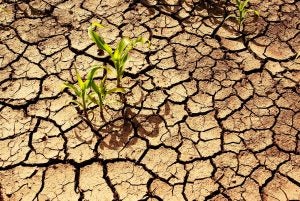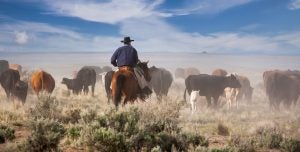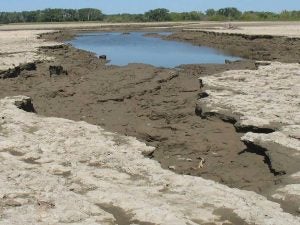Over 60 percent of the American West, Southwest, and Central Plains are under D3 — also known as severe — droughts or higher. The severe shortages reported are impacting 17 states that account for nearly half of the nation’s $364 billion in agricultural production — putting commodities, farms, ranches, and local economies reliant on crops, and downstream products at risk.
To measure the impacts of the drought, American Farm Bureau Federation has released three editions of a survey Assessing Western Drought Conditions: June 2021, October 2021, and the third survey between June 8 and July 20.
Survey responses from over 650 county and state Farm Bureau leaders, staff, and members in 15 states indicate that drought impacts not only impact crop yields but also destroy orchard trees and multiyear crops and force partial herd and flock dispersals. Out of the respondents, nearly three-fourths indicated a reduction in harvest yields, while two-thirds indicated selling portions of their herds.
“We have sold half our herd and may not be able to feed the remaining,” said a Texas producer in the open-ended question portion of the survey. “The ones we sold only brought 60-70% of what we bought them for in 2021.”
Commodities heavily impacted include:
- 74 percent of beef cattle is raised in the United States, accounting for 18 percent of the U.S.’ production by value
- 50 percent of dairy production responsible for 11 percent of U.S. agricultural production by value
- 80 percent of wheat production by value
- 70 percent of vegetable, fruit, and tree nut production by value
»Related: Degraded soil is one of growers’ most threatening disasters
Crop yield implications
Farmers in these areas are adjusting to the arid conditions by switching planned crops for the growing season and tilling crops under. Notably, respondents who are tilling crops due to drought increased by 13 percent from last year. Farmers destroying or removing multiyear crops and orchard trees also jumped 16 percent over last year.
Out of the surveyed region, yields are expected to drop as much as 38 percent this year with the most significant drops reported in Texas at a 68 percent drop, Oklahoma expecting a 60 percent decrease, and New Mexico down 54 percent.
One Arizona producer reported, “Many of the fields near us are now fallow. Cropland is being converted to housing developments at an alarming rate. Over 10,000 new homes are expected within a 10-mile radius of my house — most within a 5-mile radius, all on cropland or former dairies. It is frustrating and alarming. Where will the food come from if we grow houses instead of food?”

Livestock production implications
Livestock production is another sector getting hit hard. Despite poor conditions of grazing land, ranchers are holding onto the land. Smaller livestock inventories in these areas that support 70 percent of domestic beef production can be expected to drive up consumer prices and reduce payoffs for producers.
Ninety percent of livestock producers responding indicated an increase in feed costs, including increased cost of trucking hay into drought-stricken areas with poor forage quality. Livestock herds in Texas are down 50 percent, followed by New Mexico, which is down by 43 percent, and Oregon, down 41 percent.
A New Mexico producer reported, “Trying to help my daughter and her husband build their herd up to take over operations fully but with drought conditions, it is not looking like they will be able to hang on to their cattle either. Meantime, our costs keep going up — gasoline — feed — medicine — tax requirements — making it hard for older ranchers to turn over the reins to young couples starting off.”
Public lands ranchers are also battling the implications of diminished forage. Fifty-seven percent of respondents reported that current conditions had impaired their public lands usage, and 71 percent reported having to move livestock from rangeland due to insufficient forage.
A Utah rancher reported, “For the past two years we have gotten only about 25% of the normal amount of feed out of our desert permit. In each of the last two years our sheep have been fed hay for an additional 40-50 days, compared to normal, at a cost of about $600 per day. It appears that we may need even more hay this year at an even higher cost.”

Water access impacts
Restrictions on agricultural water use are ramping up as reservoir levels decline. For example, water levels in Lake Mead have dropped to 1,041 feet. Lake Mead and Lake Powell are below 30 percent of their total capacity.
Regulations on well drilling are also stunting groundwater access, with one California producer indicating over a year and a half wait on well permitting.
Drought, however, isn’t the only concern for water regulations. Over 40 percent of the survey respondents indicated that state or federal endangered species have reduced access to water in their areas.

Producer responses to adversity
Producers are switching to more drought-resistant crop varieties and investing in new technologies to support farms and ranches. However, the cost of these investments will continue to impact even those producers who can afford to make the adjustments. Overall, farmers indicate an expectation for revenue drops up to 38 percent from the average year due to drought.


